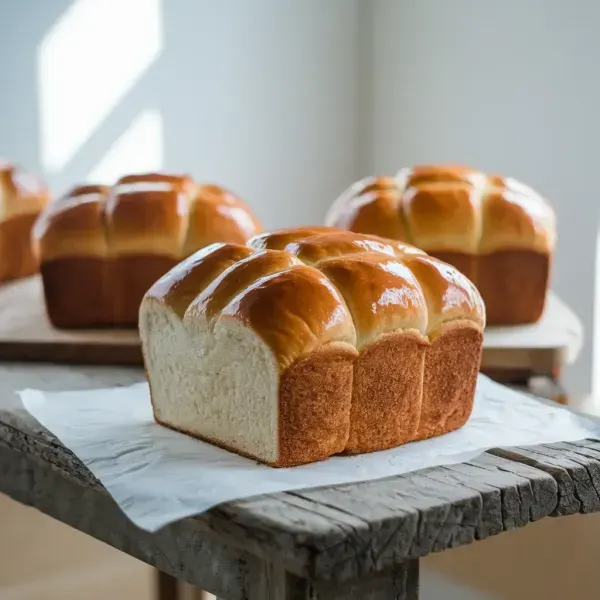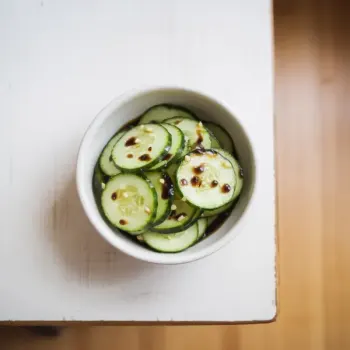
 130 minutes
130 minutesA soft and fluffy loaf of Japanese Milk Bread with a tender crumb and rich flavor.


cups
cups
cups
cups
Active Dry Yeast
teaspoons
teaspoons
each
Unsalted Butter, softened
tablespoons
1. Make the Starter
In a small heavy pot, whisk together the bread flour, milk, and water until smooth. Cook over medium heat, stirring continuously, until it thickens into a paste. Let the starter cool to room temperature.
2. Combine Dry Ingredients
In a stand mixer fitted with a dough hook, combine the bread flour, sugar, yeast, and salt. Mix until evenly distributed.
3. Add Wet Ingredients and Starter
To the dry mix, add the egg, warm milk, and cooled starter. Begin mixing on low, then increase the speed to knead for about 5 minutes until slightly sticky.
4. Incorporate Butter
Add softened butter to the dough and continue kneading for another 10-12 minutes until the dough becomes shiny and smooth.
5. First Rise
Shape the dough into a ball and place in a buttered bowl. Cover and let rise until doubled in size, about 40-60 minutes.
6. Shape the Dough
Gently punch down the dough, divide into equal portions, and shape each into a ball. Cover and let rest for 15 minutes.
7. Prepare for Baking
Preheat the oven to 350 degrees Fahrenheit. Butter a 9-by-5-inch loaf pan. Roll out each ball of dough into an oval, fold like a letter, roll into a log, and place seam-side down in the pan.
8. Final Rise
Cover the pan and let the dough rise until it peaks over the rim of the pan, about 30-40 minutes.
9. Bake the Bread
Brush the top of the dough with whole milk and bake for 35-40 minutes until golden brown and hollow sounding when tapped.
10. Cool the Bread
Let the bread cool in the pan for 10 minutes, then transfer to a wire rack to cool completely for at least 1 hour.
Accuracy is paramount in baking, and using a kitchen scale to weigh flour and liquids ensures precision and consistency, leading to better results. Flour can vary greatly in volume depending on how it's measured, so weighing ensures you’re using the exact amount.
The tangzhong method is crucial for achieving the bread's signature pillowy texture. Ensure your tangzhong cools to room temperature before mixing it with other ingredients.
The tangzhong method is crucial for achieving the bread's signature pillowy texture. Ensure your tangzhong cools to room temperature before mixing it with other ingredients, as this helps integrate it smoothly and prevents altering the yeast's effectiveness.
Using a kitchen scale to weigh flour and liquids ensures precision and consistency, leading to better results.
Letting the dough rise in a warm, draft-free area is crucial. You want the dough to double in size, which can take around 1 to 2 hours depending on the ambient temperature. Avoid rushing this step; slower fermentation can enhance flavor and texture.




Comments (0)